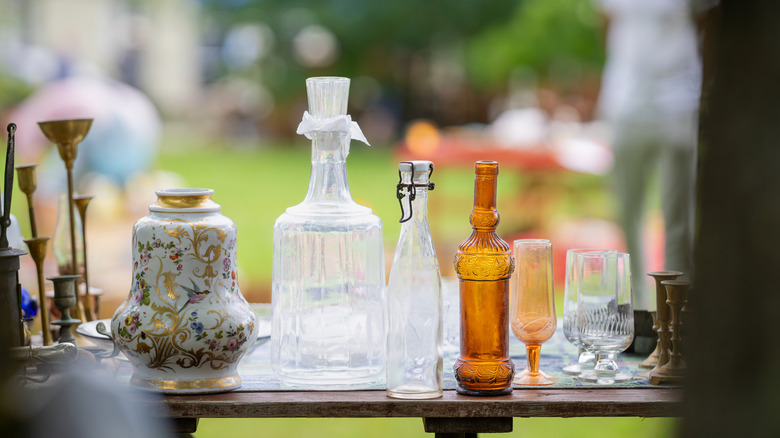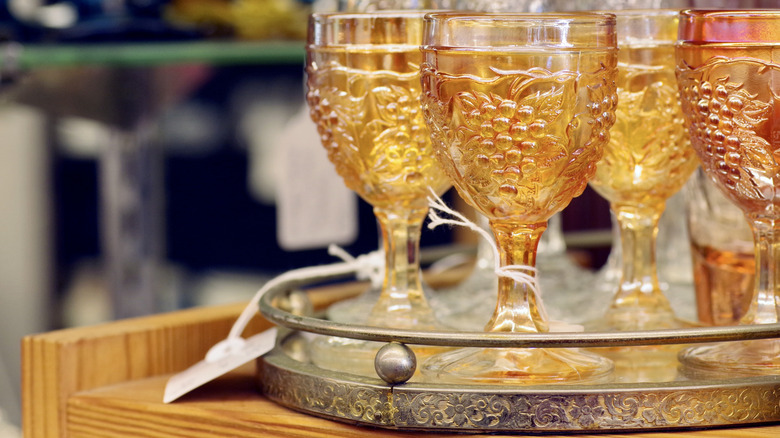Thrift This Gorgeous Glass Kitchen Collectible For Cheap (It Could Be Worth Thousands)
If your grandparents had a penchant (read: obsession) for ordering trinkets and pretty things from mail-order catalogues like mine did, you may have ended up with a small glass vase, bowl, or dish with a gorgeous iridescence to it. This variety is known, among other names, as carnival glass. Once an affordable alternative to Tiffany & Co.'s luxury pieces, some rare carnival glass products retail for tens, if not hundreds of thousands of dollars. Chances are, you can find a few pieces at your local thrift store (though no promises on the resale value).
The thrift store can be a treasure trove for finding rare and expensive dinnerware and the like, not because people are flippant, but styles change and housing sizes often decrease, leading people to pass along decorative items that they no longer have use for. In the case of carnival glass, it started as an affordable way to emulate higher-end glass that had a rainbow tint. Those pieces were tinted during the glassblowing process, whereas carnival glass was sprayed with metallic salts after the glass had been formed but while it was still hot, then pressed into molds to activate the chemical reactions resulting in the colorful hue. Usually, these items turned marigold, and this is still the quintessential color associated with the glass, though various blue and green shades also popped up.
The first collection was released in 1907 by Fenton under the name "Iridill glass," and it gained steady popularity for almost two decades following that. At the same time, other glass companies created their own versions, and soon the market became flooded, leading to a surplus by the 1930s.
Finding and authenticating carnival glass
By the time the '30s hit, these glass pieces were a dime a dozen and began to be handed out as carnival prizes as they were cheap to buy in bulk. Thus, its legacy (and name) was changed, but its spark had died down, so people didn't attribute much value to them anymore. Over the years, more and more wound up in thrift stores, and with the rise of retro kitchen design trends and other antique collectibles, people's interest in the glass was piqued once again.
Many carnival glass items are now around a century old or more, and they've maintained their vintage elegance and charm. If you're trying to verify a piece's age, pay attention to the tactile finish, as oilier glass indicates that it was made with more recent technology which leaves a residue that antiques don't possess. Additionally, older pieces have a rougher bottom with scratch marks after years of use or movement.
Unfortunately, many older carnival glass pieces don't have dates or manufacturer signs on them, so there's not a quick answer, but an antique specialist is good to have on standby before you head to the auction house. Rare pieces, like the short-lived yet revered Millersburg Glass Company's vases have picked up as much as $155,000 due to their scarcity and their unique blue metallic tint, somewhat unique to the brand. Usually collectors find marigold the most, but don't overlook these at thrift stores as some may have unique molding patterns or even slight imperfections, indicating their handcraftsmanship.


